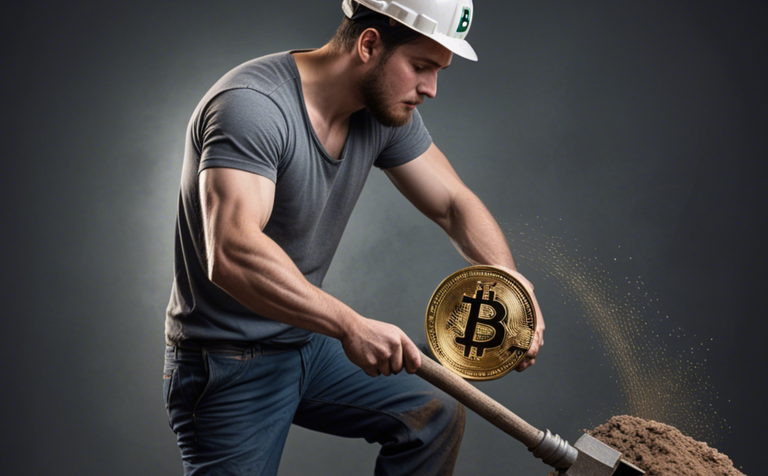If you were the owner of a small company, how would you motivate your employees to maximize their productivity?
In the latter half of the 20th century, it became commonplace for employees to receive stock options as part of their compensation package.
This concept of shared ownership aligned employees' interests with company performance, and increased retention, morale, and motivation.

Bitcoin Revolutionizes Shared Ownership
Bitcoin launched in 2009 and took the idea of shared ownership to the next level.
Bitcoin is the first decentralized organization that anyone can become a stakeholder in - regardless of their location, financial standing, social class, race, gender, etc.
Also, unlike investing in corporate equities, nobody needs permission to mine or purchase Bitcoins. The asset is unconfiscatable, truly empowering the individual to act freely in the best interests of the project.
As direct owners of a relatively unknown unstoppable financial network, the early adopters had a massive incentive to contribute to Bitcoin's success.
This revolutionary form of shared ownership applies not only to Bitcoin, but to other decentralized cryptocurrencies too.
Prioritizing Effective Token Distribution
Never before in history have we had a form of money that aligns stakeholders' interests so well with the success of an organization, but how can we maximize its effectiveness?
A key aspect to consider is how the currency is distributed. For example, are people acquiring the token by earning it, mining it, or are they simply receiving it for free?
Remember the old phrase, "people value what they earn, more than what they are given".
Therefore, to maximize mental and emotional investment, each member should have to earn their stake in the network.
Long-term success is more likely when the community is deeply invested and committed to the project.

Mining Vs. Initial Coin Offerings
In Bitcoin's early days, participants had to configure a personal computer to mine Bitcoin, expending effort and electricity. With each block their computer solved, they accumulated an additional 50 Bitcoin, and felt a sense of accomplishment.
Also, different from the venture capitalists of today (who have loads of excess funds to invest in random projects) early investors in Bitcoin had to risk their precious capital, not knowing if the experimental project would be a success or an abject failure.
Compare that to the ICO craze of 2017, for example, when everybody and their dog was launching a token sale on Ethereum. The founders of these projects often gifted themselves large portions of the token supply.
Most of these ICOs failed because the stakeholders didn't earn their tokens, and therefore they weren't truly invested in the projects. Whereas the early adopters of Bitcoin were more committed to the network's success.
Airdrops Aren't Appreciated
Many projects have tried to build investment in their communities by dropping tokens to random blockchain addresses. Oftentimes the recipient doesn't have to do anything to receive the reward.
Tokens that are given out for free, whether to insiders or random crypto users, are likely to be sold for fiat on the market when the price rises, because the recipients haven't invested themselves into the project, and therefore have no loyalty towards it.

Earning Is The Way
The best way to foster a strong community is to provide a simple way for participants to earn the project's token as a reward for their contributions. The earning should be automatic, and based on system rules, rather than doled out by a central authority who controls the supply.
Two good examples are HIVE and (more recently) InLeo, because participants in these communities are earning tokens for producing content and building relationships with fellow community members. Therefore, they are constantly building their investment and commitment to the project, driving fundamental value to their respective tokens.
I can't help but think how HIVE's content reward system could be applied to other projects too.
Expanding On DePINs
Decentralized Physical Infrastructure Networks also reward community members, albeit in a different way. Participants earn tokens by building out physical infrastructure, and providing services (like cellular, compute, and storage) to customers.
Take a project like Helium (HNT), for example. Users earn tokens by installing 5G radios, providing coverage to customers, and offloading network traffic from large carriers. Imagine if Helium community members could also earn tokens by answering questions in their technical forums, for example.
This would motivate people to participate even more in other areas of the project.
Until Next Time...
We should be on the lookout for projects that reward community members for their daily efforts, rather than just doling out tokens for free. Tokens should be distributed proportionally based on effort, and also awarded for engaging with the community.
Large allocations of the token supply to insiders or investors who aren't truly invested in the project could be detrimental over the long-run, especially if those players are only seeking fiat gains, and opposed to true industry disruption.
If you learned something new from this article, be sure to check out my other posts on crypto and finance here on the HIVE blockchain. You can also follow me on InLeo for more frequent updates.
Resources
Images Courtesy of Venice AI [1]
Image of Parachute Airdrop [2]
Posted Using InLeo Alpha
Congratulations @brennanhm!
You raised your level and are now a Dolphin!
Check out our last posts: